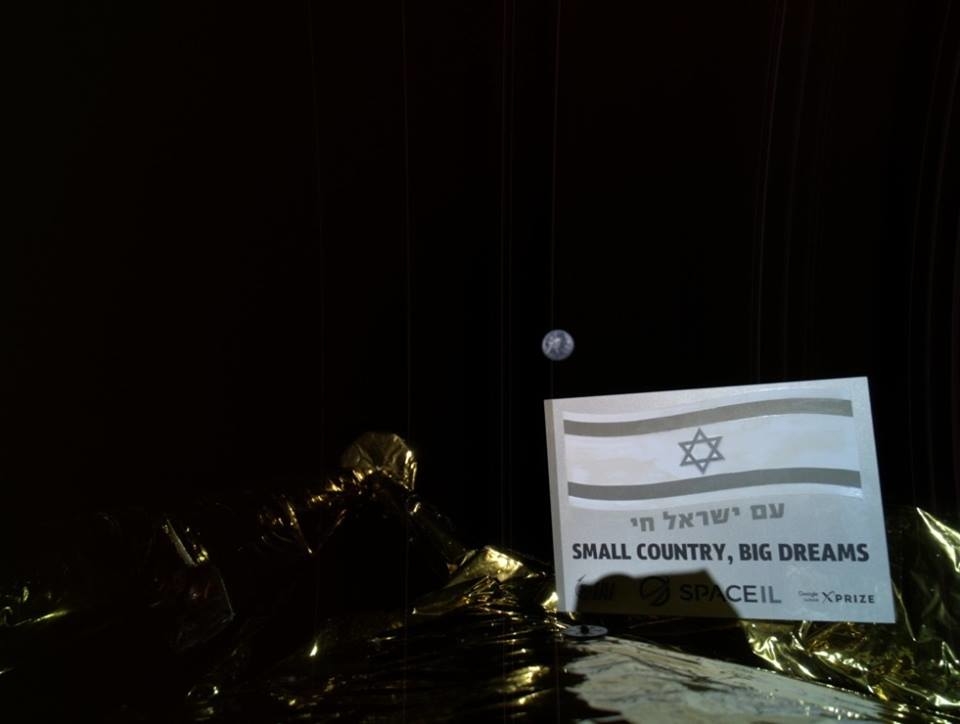Israel's Moon Lander Arrives in Lunar Orbit Tomorrow

But Beresheet needs to ace a key engine burn tomorrow morning.

Israel's history-making Beresheet lunar lander will arrive in orbit around the moon tomorrow (April 4) — if the spacecraft aces a crucial engine burn.
The six-minute maneuver will be performed tomorrow morning, starting at 10:15 a.m. EDT (1415 GMT), mission team members said in a media advisory today (April 3).
Beresheet has been looping around Earth in elliptical orbits since its Feb. 21 launch and has performed several speed-boosting engine burns to send it higher and farther away. But tomorrow's maneuver will be different; it's meant to slow the spacecraft, so Beresheet can be captured by lunar gravity.
Related: Israel's 1st Moon Lander Beresheet in Pictures
If all goes according to plan, the braking will reduce Beresheet's velocity relative to the moon from 5,281 mph (8,500 km/h) to 4,660 mph (7,500 km/h), mission team members said. (Beresheet is operated jointly by the nonprofit organization SpaceIL and the company Israel Aerospace Industries, or IAI.)
Spacecraft risks
If something goes wrong tomorrow, Beresheet could leave Earth's gravity well while missing the moon's and enter a different and undesirable orbit in the solar system. This would bring the pioneering mission to an end, Beresheet's handlers said.
A successful maneuver will position the spacecraft on an elliptical orbit around the moon, in which the nearest point (perilune) is 310 miles (500 kilometers) from the lunar surface and the farthest one (apolune) is 6,213 miles (10,000 km) away.
Breaking space news, the latest updates on rocket launches, skywatching events and more!
Earlier this week, Beresheet passed its closest point to Earth for the last time, at 1,056 miles (1,700 km), and continued to its meeting point with the moon at a range of 248,548 miles (400,000 km).

Landing approach
In the week following tomorrow's milestone capture, the SpaceIL and IAI teams will perform several maneuvers to circularize Beresheet's orbit around the moon and lower it, until the lander zips 124 miles (200 km) above the lunar surface.
The first lunar orbits will last 14 hours, team members said.
As Beresheet approaches landing, each lunar orbit will last only two hours. And it everything works out, the spacecraft will make an autonomous landing on the moon's Sea of Serenity on the evening of April 11.
That will be an epic moment: To date, only the governments of the Soviet Union, the United States and China have pulled off a soft landing on the moon.
- Israel's 1st Moon Lander: The SpaceIL Beresheet Lunar Mission in Pictures
- Why It'll Take Israel's Lunar Lander 8 Weeks to Get to the Moon
- Israeli Moon Lander Snaps Epic Space Selfie with a Full Earth
Leonard David wrote the forthcoming book "Moon Rush: The New Space Race," to be published by National Geographic in May 2019. A longtime writer for Space.com, David has been reporting on the space industry for more than five decades. Follow us on Twitter @Spacedotcom or Facebook.

Leonard David is an award-winning space journalist who has been reporting on space activities for more than 50 years. Currently writing as Space.com's Space Insider Columnist among his other projects, Leonard has authored numerous books on space exploration, Mars missions and more, with his latest being "Moon Rush: The New Space Race" published in 2019 by National Geographic. He also wrote "Mars: Our Future on the Red Planet" released in 2016 by National Geographic. Leonard has served as a correspondent for SpaceNews, Scientific American and Aerospace America for the AIAA. He has received many awards, including the first Ordway Award for Sustained Excellence in Spaceflight History in 2015 at the AAS Wernher von Braun Memorial Symposium. You can find out Leonard's latest project at his website and on Twitter.
